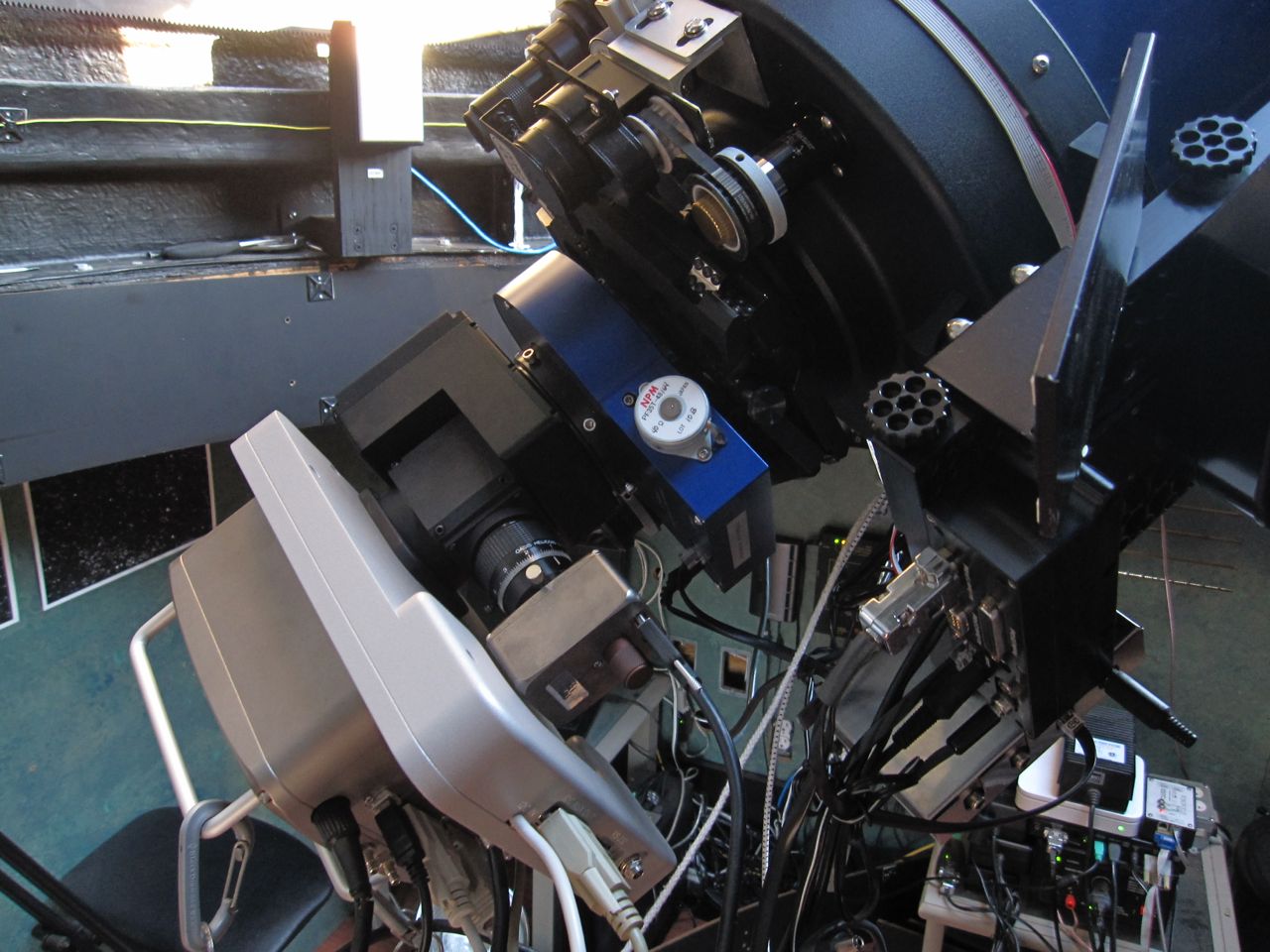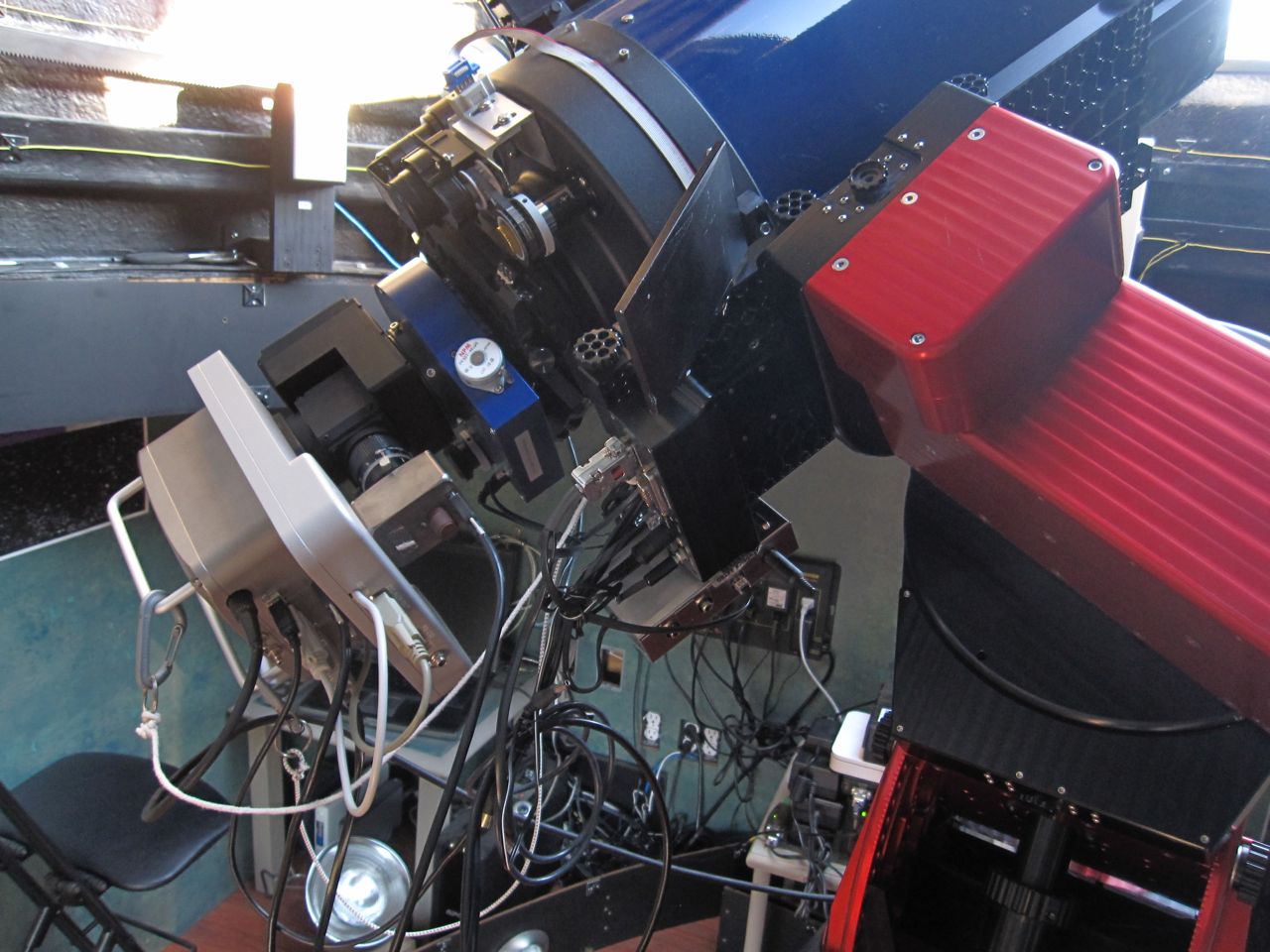
n for narrowband imaging and larger light throughput for less vignetting and improved full-frame astrophotography

I have had several problems ("challenges") with my long focal length system (a 12" LX200R scope), including seeing flats with apparent reflections due to the narrow optical train. For example, the Optec Pyxis 2" rotator has an inside diameter of only 1.65" (4.2cm). Due to the long optical train, I thought I was vignetting due to the small aperture of some of the components. The design focal length of the 12" LX200R is 3050 mm, rather than the approx. 3420 mm at which I'm now operating. Therefore, I began to desire a larger aperture optical train, with smaller backfocus distance, if possible. I searched components that optimized the space tradeoffs, such as the Astrodon MOAG, which neatly fits between the AO-L and an STL camera (with or without FW8 filter wheel); and the Clement Bellerophon focuser that provides a 3" aperture and 1.5" (38 mm) travel in only a 1" (25 mm) minimum thickness. I had looked at the Zerotator by Van Slyke, but at the time I was ready to upgrade, they didn't have their act together in terms of a motorized rotator with ASCOM compatible software. I wanted to add the FW8 filter wheel so that I could progress to narrowband imaging (requiring Ha, SII, and OIII filters, in addition to the standard LRGB filters), and this necessitated using a MOAG to enable adaptive optics guiding with a bright guidestar ahead of the narrowband filters. In August 2011, I decided to upgrade my optical train. The initial upgrade was to be the FW8-STL, an 8-position computer-controlled filter wheel which replaces the internal 5-position filter wheel in the STL-11000M camera; this would allow me to move to full narrowband images - Ha, OIII, SII as well as the normal L, R, G, and B (so 7 filters are required in total). The FW8 filter wheel is quite heavy, and I was unsure of whether the 2" TCF-S focuser I was using would handle the additional weight. In addition, with narrowband filters (very narrow at 3nm bandwidth), not much light from stars gets through the filters, so guiding with the normal guidechip (a second, smaller CCD in the SBIG cameras) is usually not practical - it is nearly impossible to find a bright enough guide star ... and then the framing of the image may become non-optimum. So, an off-axis guider and remote guide head is needed, which can pick off some light from the scope before the light passes through the narrowband filters - such light being focused (by a Borg helical focuser) onto the chip of a small CCD guide camera - in my case, the "remote guide head" (RGH) which is an accessory to the STL-series SBIG cameras. In addition, my Pyxis 2" rotator would not be able to handle the additional weight of the large filter wheel and the off-axis guider and remote guide head ... so a larger rotator would also be required (!). Altogether, it was estimated that my upgraded optical train would weigh about 17-18 lbs (8Kg), so each component needed to be able to support the weight of downstream components. I could have started at the telescope with either the Pyxis 3" rotator or a larger focuser (so the focuser weight doesn't need to rotate, easing the strain on the Pyxis). I chose to connect the focuser - a Bellerophon 3" RoboFocus-driven focuser made by Don Clement - directly to the scope, with the Pyxis 3" rotator connected to the Bellerophon, and only components downstream of the Pyxis needing to be rotated. |
At right, you can see the new optical train. From left: STL-11000M camera, FW8-STL filter wheel, Astrodon MOAG with Borg Helical Focuser and remote guide head, AO-L adaptive optics unit, Pyxis 3" camera rotator, and Clement Bellerophon 3" focuser. |  |
|
Optical train from Pyxis rotator to the STL-11K camera. Note that the AO-L/MOAG/RGH assembly is rotated 180 degrees from the 'normal' position. This makes the guide image the same, but reverses directions on the AO-L, preventing CCDAutoPilot from correctly determining mount bump directions. |
Another view of the new optical train on the back of the 12" LX200R scope. Although the mount can easily handle this additional (approx. 20 lbs / 9 Kg) weight, it wasn't obvious that the back casting of the scope could handle the weight. Preliminary testing has shown good all-sky pointint accurary and minimal 'flop' when moving to a new position - demonstrating that the optical train is solid and not flexing to a great extent. |
 |
Please check out the individual components of my new optical train on the following pages: FW8-STL 8-position (2" dia) Filter Wheel Clement Bellerophon 3" Focuser
|
|
New telescope optical train for narrowband imaging and larger light throughput for less vignetting and improved full-frame astrophotography